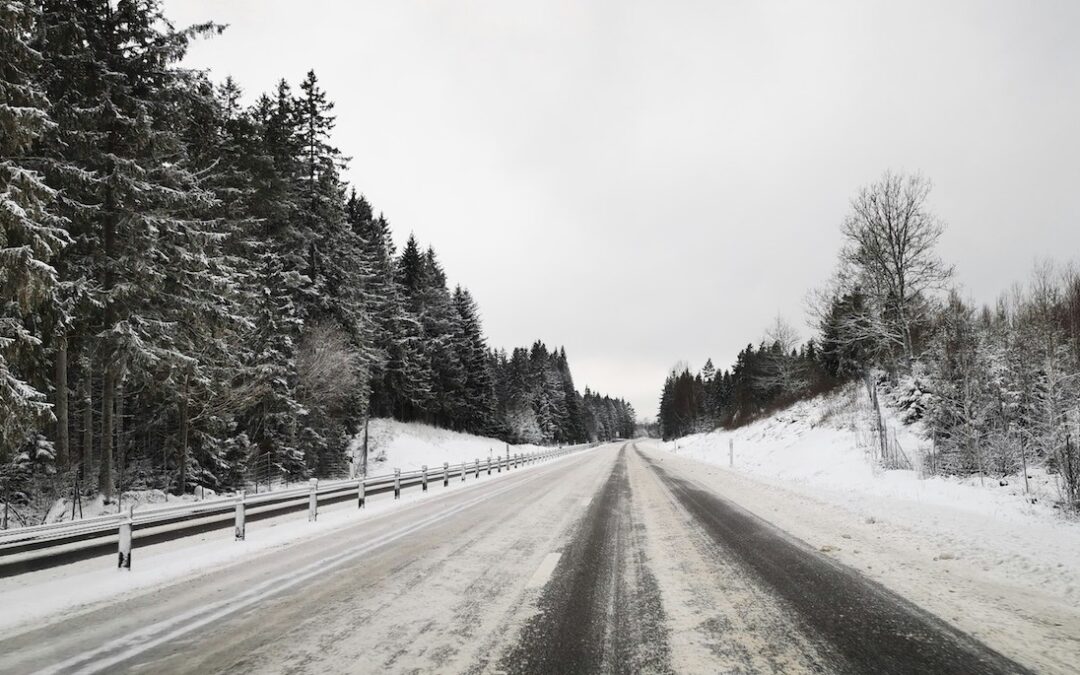Winter came a little early this year—with frigid temperatures and heavy snow roaring into Ontario and Quebec. Some areas received nearly 10 and 15 centimetres of snow, while others received even more.
Over the next few weeks and months, Ontario residents are likely to experience messy conditions that can make even the most experienced traveller feel a little nervous. Those who aren’t careful may become involved in car accidents, bike accidents, or even slip and fall accidents when they travel.
However, with a little extra caution and these easy tips, you can minimize your risk of injury this winter.
DRIVE SAFELY
Even with the snow ploughs working nonstop to keep the roads clear, sometimes they can’t keep up with Mother Nature. Here’s what you can do when you must drive in poor conditions.
- Prepare your vehicle for winter weather. Keeping your vehicle in good repair is key to driving safely. Double-check that your battery, lights, and ignition are in good condition. Ensure your brakes and tires are winter compatible, not the generic ones for all seasons.
- Slow down. Even if the roads look dry, don’t expect to drive on them like you would during the summer. Salt and sand reduce friction, even for those vehicles with all-wheel drive.
- No sudden movements. Keep your movements smooth on the wheel. If you feel your car slipping, don’t overcorrect—this could worsen your spin. Easy does it on the brakes and the gas.
- Turn off cruise control. In many cases, you don’t want to slam on your brakes when you feel your car slipping. Rather, it’s better to let the car gradually slow down on its own. Cruise control prevents this, and the continued acceleration may cause you to overdrive on perilous roads.
And when in doubt, don’t go out. It’s better to stay home than to risk driving in poor weather.
BIKE SAFELY
While many summer cyclists pack up their biking gear when snow falls, you may still have to use your bike to commute to work. With the right clothing, gear, and techniques, you can stay safe year round.
- Ride slower. Just like a car, you’ll want to give yourself time to start and stop gradually. Slower speeds mean more control and more time to react and recover.
- Reduce tire pressure. Drop your tire pressure to about 10 to 20 PSI (pounds per square inch). You’ll have better traction in icier conditions.
- Get off your bike for left turns. During snowy conditions, lateral force doesn’t take as strongly to the road. To make a turn, you’ll have to slow down and put as much of your weight on the top of the bike as possible. For left turns in busy intersections, it may be better to get off your bike and cross on foot.
- Use a lower gear. Slush can clog your cogs and freeze your gears in place. If your gears freeze on a lower gear, you can still pedal in most terrain.
Don’t forget to tune-up your bike. You may have to swap your brakes or shifter cables to winterize your bike. Consider adding additional reflectors and lights for your bike because fewer daylight hours means decreased visibility.
WALK SAFELY
Whether you walk to the grocery store, or you need to walk from your car to your office, you may slip or fall on icy sidewalks. Practice these safe walking habits.
- Wear a good pair of winter boots. You’ll want a good pair that offers both warmth and stability. Look for well-insulated, waterproof boots with thick, non-slip treads. Consider attaching ice grippers to help you walk on packed snow on ice. Just remember to remove ice grippers when you come indoors.
- Take small, shuffling steps. Keep your body loose and spread your feet apart to create a wider base of support. Don’t let your knees lock—letting them bend lowers your centre of gravity to improve stability. When you take a step, place your whole foot on the ice at once.
- Carry a small bag of grit, sand, or non-clumping cat litter. Sprinkle the sand or grit on the ground whenever you spot a particularly icy sidewalk, step, or bus stop.
- Use a cane or walker. Even if you don’t normally need them, a cane or walker can give you additional support in snowy weather. Consider attaching an ice pick at the end of your cane to better grip the ice.
These tips will help you minimize your risk of slipping and falling, but it doesn’t eliminate the risk entirely. Knowing how to fall may be just as important as knowing how to walk. If you feel yourself falling, tuck your body, lift your head, and roll into a ball. Avoid breaking your fall with your hand because this could lead to wrist injury.
STAY CAUTIOUS!
This tips will help you stay safe while you travel in the snow. However, keep in mind that not everyone may be as cautious as you are. Watch out for reckless drivers or dangerous patches of sidewalk that homeowners neglected to plough.
If you become injured as a result of someone else’s negligence or recklessness, call your personal injury lawyer to handle your case.

